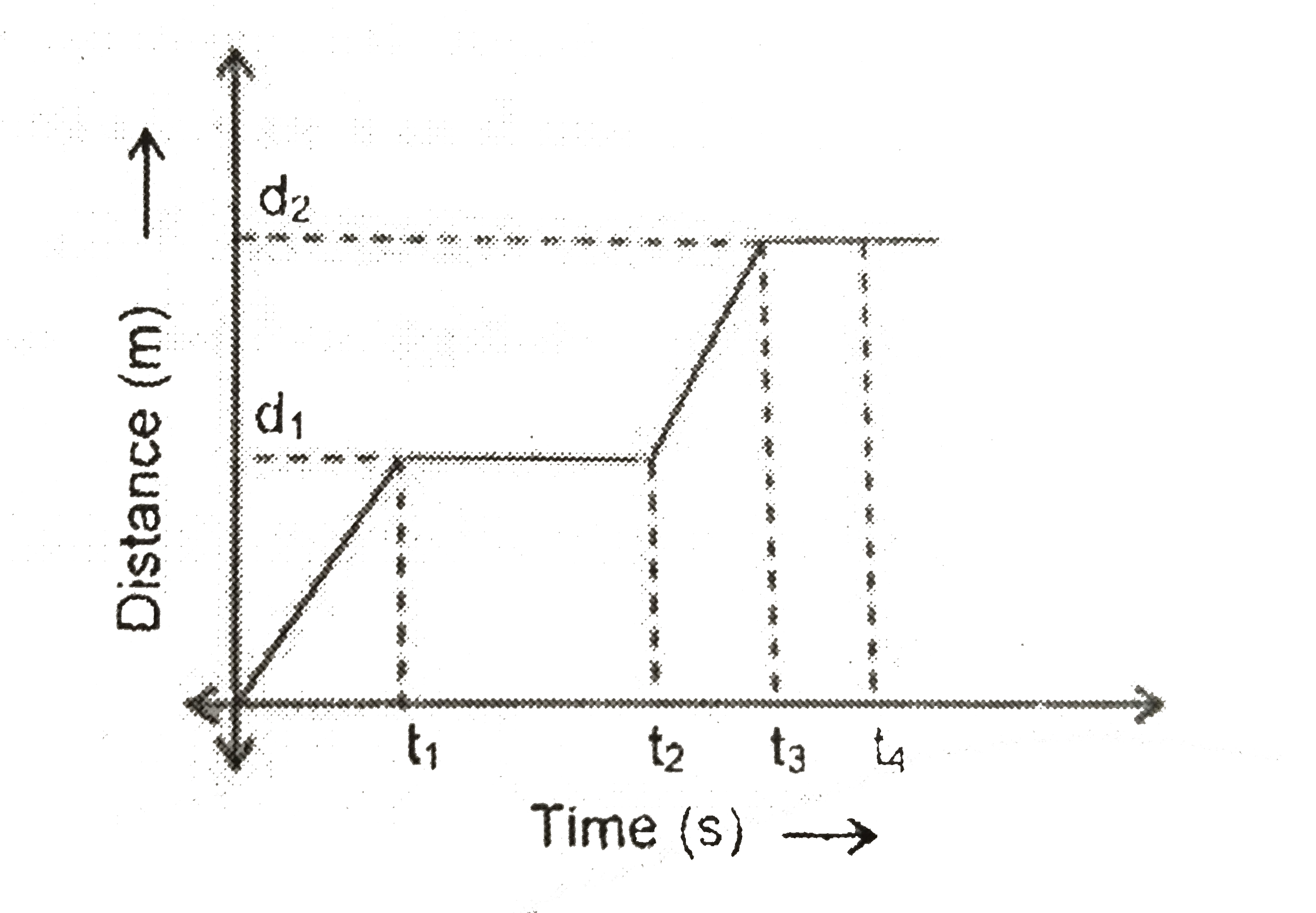Assertion: Graph drawn between distance and time in case of a uniform motion is a straight line. Reason : In case of uniform motion, the body covers equal distance in equal interval of time.
If both assertion and reason are true and reason is the correct explanation of assertion.
If both assertion and reason are true but reason is not the correct explanation of assertion.
If assertion is true but reason is false.
If assertion is false but reason is true.
The correct Answer is:A
In case of uniform motion, distance covered is directly proportional to the time interval or vice versa.
Topper's Solved these Questions
- MEASUREMENTS AND MOTIONBOOK - MTG IIT JEE FOUNDATIONCHAPTER - MEASUREMENTS AND MOTIONEXERCISE - EXERCISE(COMPREHENSION TYPE )
4 Videos
- MEASUREMENTS AND MOTIONBOOK - MTG IIT JEE FOUNDATIONCHAPTER - MEASUREMENTS AND MOTIONEXERCISE - EXERCISE(INTEGER/ NUMERICAL VALUE TYPE )
5 Videos
- MEASUREMENTS AND MOTIONBOOK - MTG IIT JEE FOUNDATIONCHAPTER - MEASUREMENTS AND MOTIONEXERCISE - EXERCISE (MATCH THE FOLLOWING)
3 Videos
- MAGNETIC EFFECTS OF ELECTRIC CURRENTBOOK - MTG IIT JEE FOUNDATIONCHAPTER - MAGNETIC EFFECTS OF ELECTRIC CURRENTEXERCISE - EXERCISE (INTEGER / NUMERICAL VALUE TYPE)
3 Videos
- SOME NATURAL PHENOMENABOOK - MTG IIT JEE FOUNDATIONCHAPTER - SOME NATURAL PHENOMENAEXERCISE - Olympaid/HOTS Corner
10 Videos
Similar Questions
Knowledge Check
PASSAGE-I : A body is said to be in motion when its position changes continuously with respect to a stationary object taken as reference point. A body has a uniform motion if it travels equal distance in equal intervals of time, no matter how small these time intervals may be. The distance-time graph for uniform motion is a straight line. A body has a non-uniform motion if it travels unequal distance in equal intervals of time. The distance-time graph for a body having non-uniform motion is a curved line.
The distance-time graph for a uniform motion isA B
B C
C D
D
PASSAGE-I : A body is said to be in motion when its position changes continuously with respect to a stationary object taken as reference point. A body has a uniform motion if it travels equal distance in equal intervals of time, no matter how small these time intervals may be. The distance-time graph for uniform motion is a straight line. A body has a non-uniform motion if it travels unequal distance in equal intervals of time. The distance-time graph for a body having non-uniform motion is a curved line.
If a body travels 2 metres in 1st second, 3 metres in 2nd second and then, travels with a constant speed, the motion of the body isAoscillatoryBuniformCnon-uniformDcircular motion.PASSAGE-I : A body is said to be in motion when its position changes continuously with respect to a stationary object taken as reference point. A body has a uniform motion if it travels equal distance in equal intervals of time, no matter how small these time intervals may be. The distance-time graph for uniform motion is a straight line. A body has a non-uniform motion if it travels unequal distance in equal intervals of time. The distance-time graph for a body having non-uniform motion is a curved line.
Motion of a freely falling body is an example ofAuniform motionBnon-uniform motionCcircular motionDrotational motion.
The distance -time graph of a body moving in a straight line is shown below. Draw the speed time graph of the motion of the body.

View SolutionIn case of uniform motion acceleration is
View SolutionAssertion: A body has a non-uniform motion, if it travels unequal distances in equal intervals of time. Reason : In non-uniform motion, the body covers equal distance in unequal intervals of time.
View SolutionIf a body covers equal distances in equal intervals of time, the motion is said to be :
View SolutionThe graph of distance -time graph for uniform motion for an object is
View Solution
